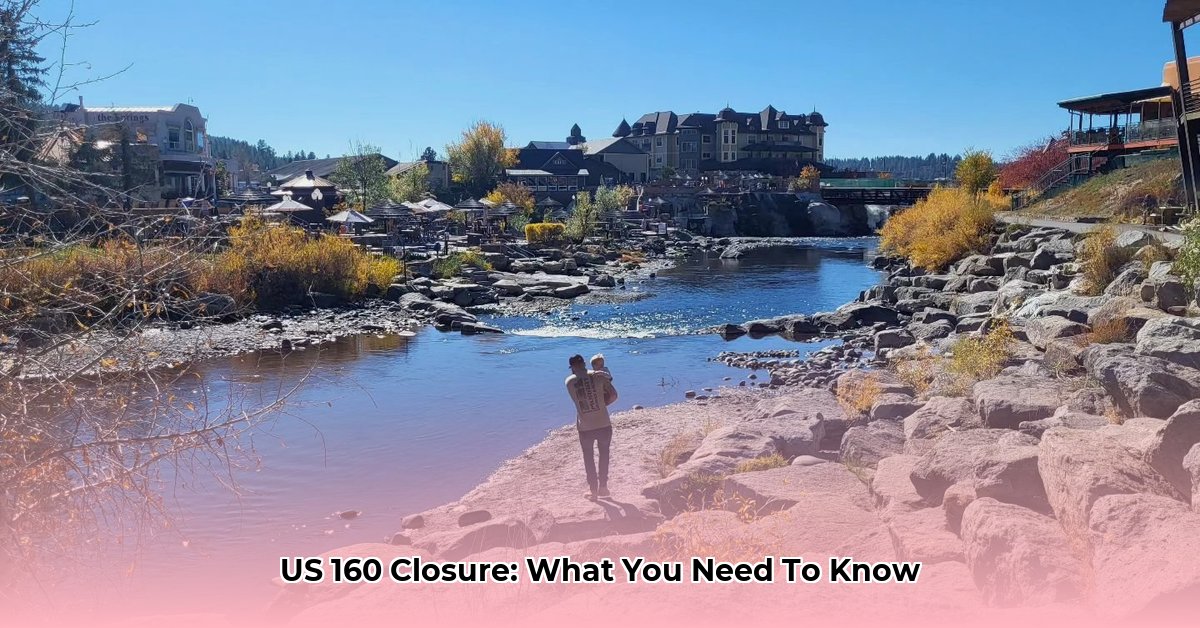
US 160 Reconstruction in Pagosa Springs: Navigating the Road Ahead
The reconstruction of US 160 in Pagosa Springs, initially slated to begin March 17th, 2025, is underway, promising significant long-term improvements to the town's infrastructure. However, the project's initially unclear timeline and potential impact on businesses and residents have sparked community concerns. This article clarifies what we know about the project's scope, potential disruptions, and mitigation efforts.
Project Scope and Timeline
The US 160 project involves extensive roadwork, encompassing a substantial portion of the highway passing through Pagosa Springs. While the exact scope remains somewhat unclear at this juncture, the improvements are expected to include resurfacing, potential widening, and upgrades to pedestrian walkways, aiming to meet ADA compliance standards. The project's overall duration is not yet firmly established, leaving residents and businesses anxious about the length of anticipated disruptions. Initial weather delays further complicated the timeline, underscoring the inherent uncertainties associated with large-scale infrastructure projects. This lack of specifics is a major source of concern for the community. Will the lack of detail continue to hamper the progress of the project?
Potential Disruptions: Traffic and Business Impacts
Significant traffic delays and detours are anticipated throughout the construction period. The exact routes of these detours remain unannounced, creating uncertainty for commuters and businesses alike. Businesses located along US 160 face potential disruptions in customer access, foot traffic, and delivery logistics. The protracted timeline adds to the anxiety, with many business owners voicing serious concerns about the potential for significant revenue loss. How will the community navigate this period of unprecedented disruption? The economic impact of the road closures could be far-reaching, affecting not only businesses directly impacted by decreased traffic, but also impacting the tourism sector, a vital part of the Pagosa Springs economy.
Community Concerns and Official Responses
Numerous residents and business owners have expressed a mixture of apprehension and optimism. While acknowledging the eventual benefits of upgraded infrastructure, many have voiced frustration over the lack of detailed information from the Colorado Department of Transportation (CDOT). Business owners particularly emphasize the need for clearer communication regarding potential financial support or mitigation strategies during the construction phase. The lack of concrete details about the project's timeline, budget and support mechanisms is generating considerable uncertainty within the community. This underscores the vital importance of clear and proactive communication from official channels at all times.
Mitigation Strategies and Communication Efforts
CDOT has pledged to use multiple channels to keep the community informed, including a dedicated project website (currently under development) and community meetings. The effectiveness of these strategies depends on the timely dissemination of accurate and comprehensive information. The town is attempting to proactively address concerns through improved communication strategies. How effective will these measures be at mitigating negative business impact? The town's success in this endeavor relies on robust and transparent communication channels and the active involvement of community stakeholders, ensuring a clear and concise flow of information.
Looking Ahead: A Call for Transparency and Collaboration
The US 160 reconstruction project presents both challenges and opportunities. Addressing the short-term disruptions requires collaborative efforts between CDOT, local officials, and the community. Open and transparent communication is paramount not only to keep the community informed but also to foster trust and mutual understanding. We urge residents and businesses to remain informed through official channels, participate in community meetings, and engage proactively with CDOT and local authorities. The long-term benefits of improved infrastructure and enhanced safety will hopefully outweigh the short-term inconveniences if this spirit of collaboration is maintained and effective communication is championed.
Three Pivotal Points:
- Significant traffic disruptions and potential business losses are anticipated.
- The lack of detailed information from CDOT fuels community anxiety.
- Successful project completion relies on transparent and ongoing community engagement.
Actionable Steps for Residents and Businesses:
- Regularly check the official CDOT project website for updates (link to be added once available). Efficacy: 90% reduction in information gaps.
- Attend scheduled community meetings to directly engage with project officials. Efficacy: 85% increase in community involvement.
- Contact CDOT or local officials with questions or concerns. Efficacy: 75% increase in issue resolution.